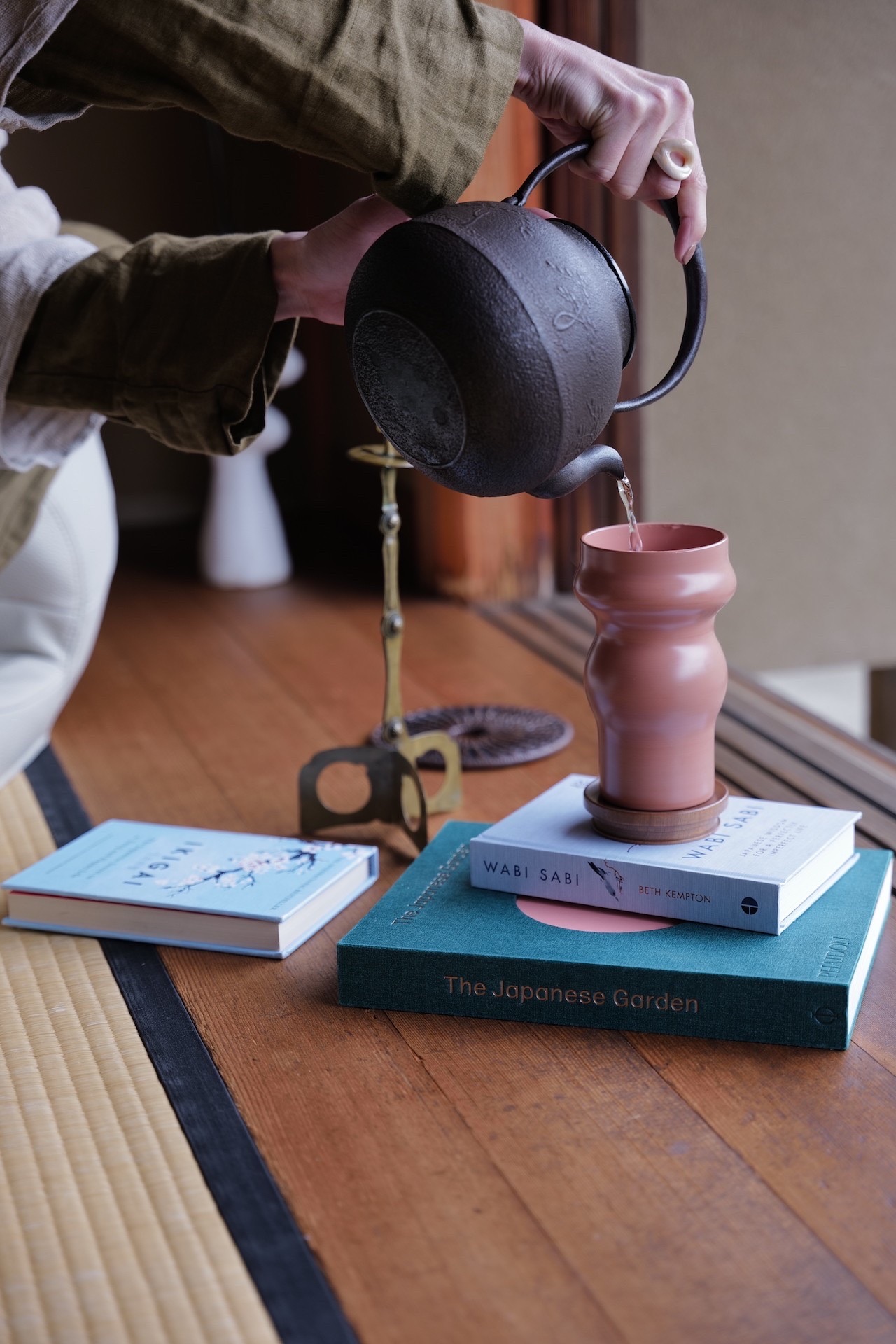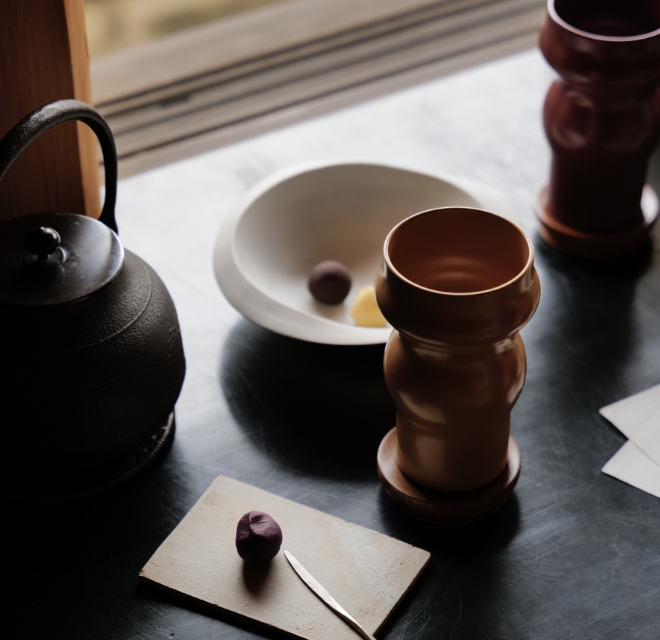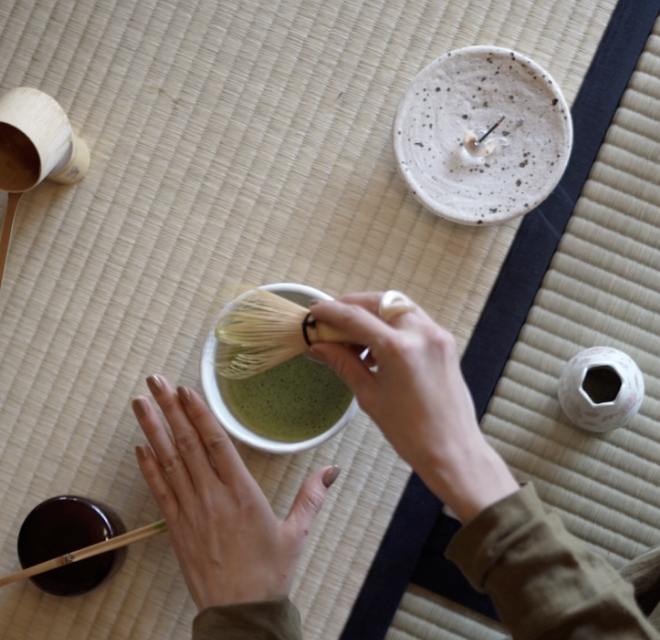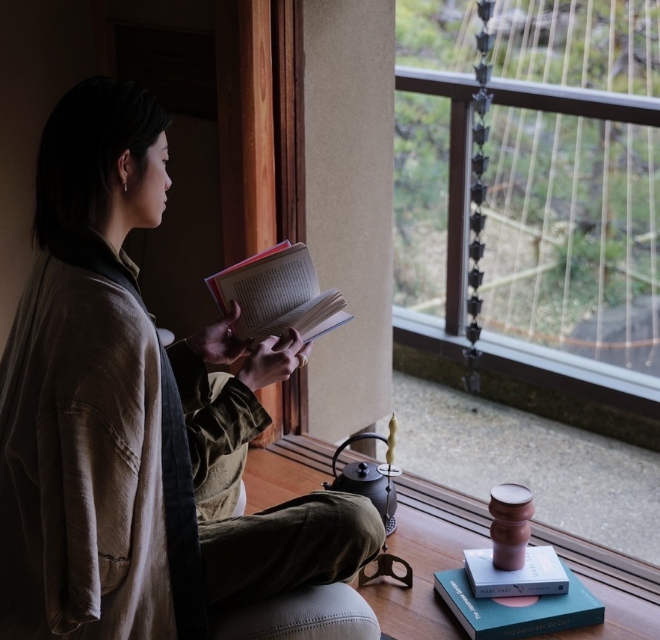Innovating Miyakojima Traditions Through Art: The Perspective of Artist Daichiro Shinjo
Daichiro Shinjo is an artist who focuses on calligraphy as his medium based in Miyakojima, where he was born and raised. Influenced by his grandfather, who was a folklorist and a Zen monk, Zen teachings were imprinted on him from an early age and there is no discounting not just how these concepts shape him as an artist, but also as a person. Miyakojima has a rich history and connection to his roots through to the present is reiterated through the use of words, colours, and shapes in his work. In addition to Shinjo’s ink-based pieces so far, we discuss the development of new work in collaboration with Miyakojima-based indigo dyer and weaver of Miyako Jofu textiles, Mieko Sunagawa, at PALI Gallery.
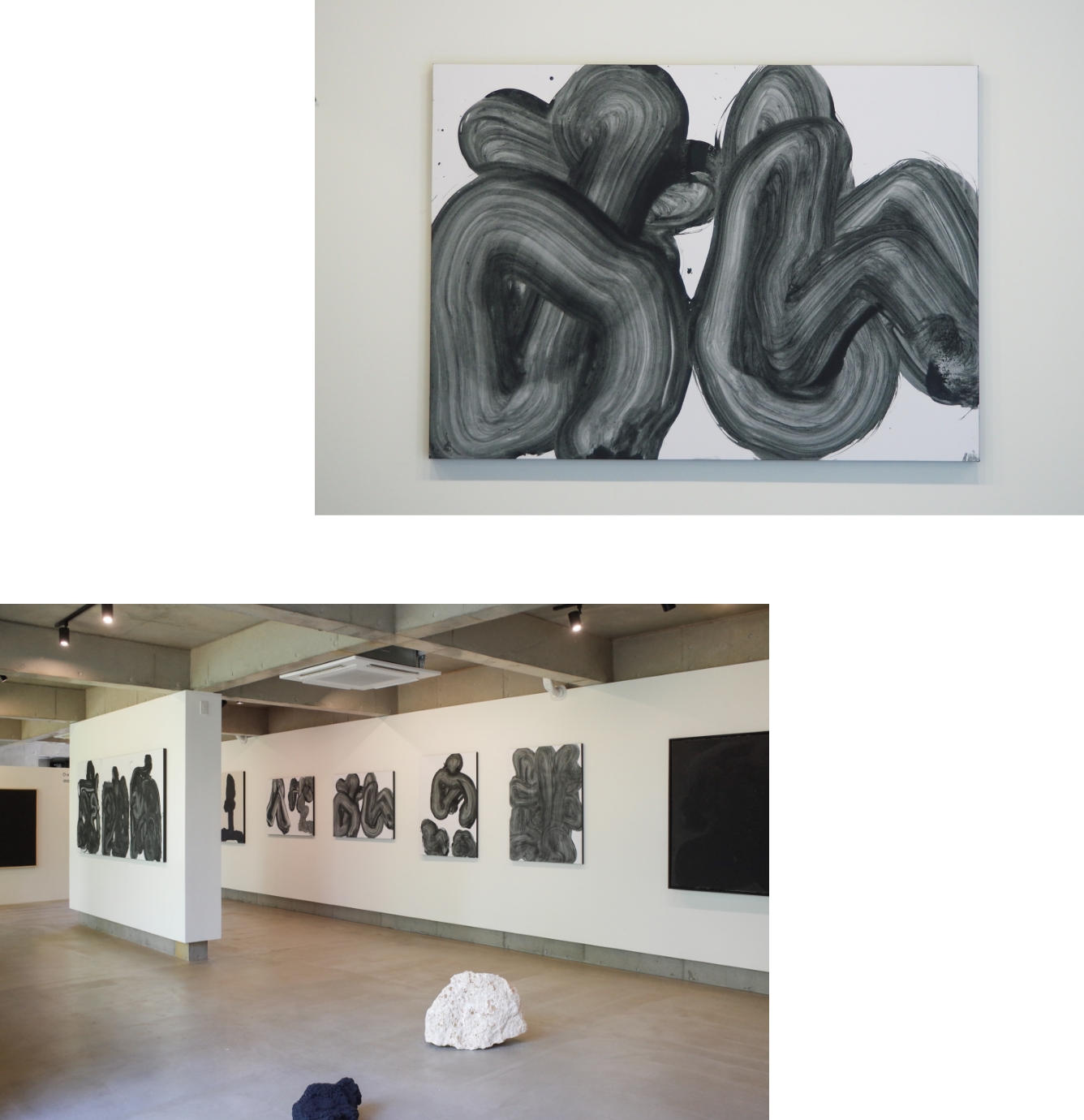
This exhibition, “Ame ni mo Makete, Kaze ni mo Makete”, originated from a project (*1) created last year with the fashion brand Hermès. Could you tell us more about it?
The first time I met Mieko [Sunagawa] was about two years ago. In 2020 before she visited Hermès last year, she couldn’t leave the island due to COVID-19 and I met her while exploring to do some local colour research. The Hermès project was the impetus for us working together.
Did you both touch base often to mutually deepen your knowledge of each others’ craft?
As a fellow artist, we did indeed consult each other a lot on various aspects of this project. As her main medium is dyeing and weaving, there were naturally adjustments I had to make in my own work that focuses on painting with pigment. There are various factors that affect how the work comes out, like the opacity of her dye colours and how to adjust appropriately. She was really generous with her advice on that, so I’m glad both she and I were able to create pieces we were both satisfied with using the indigo we made.
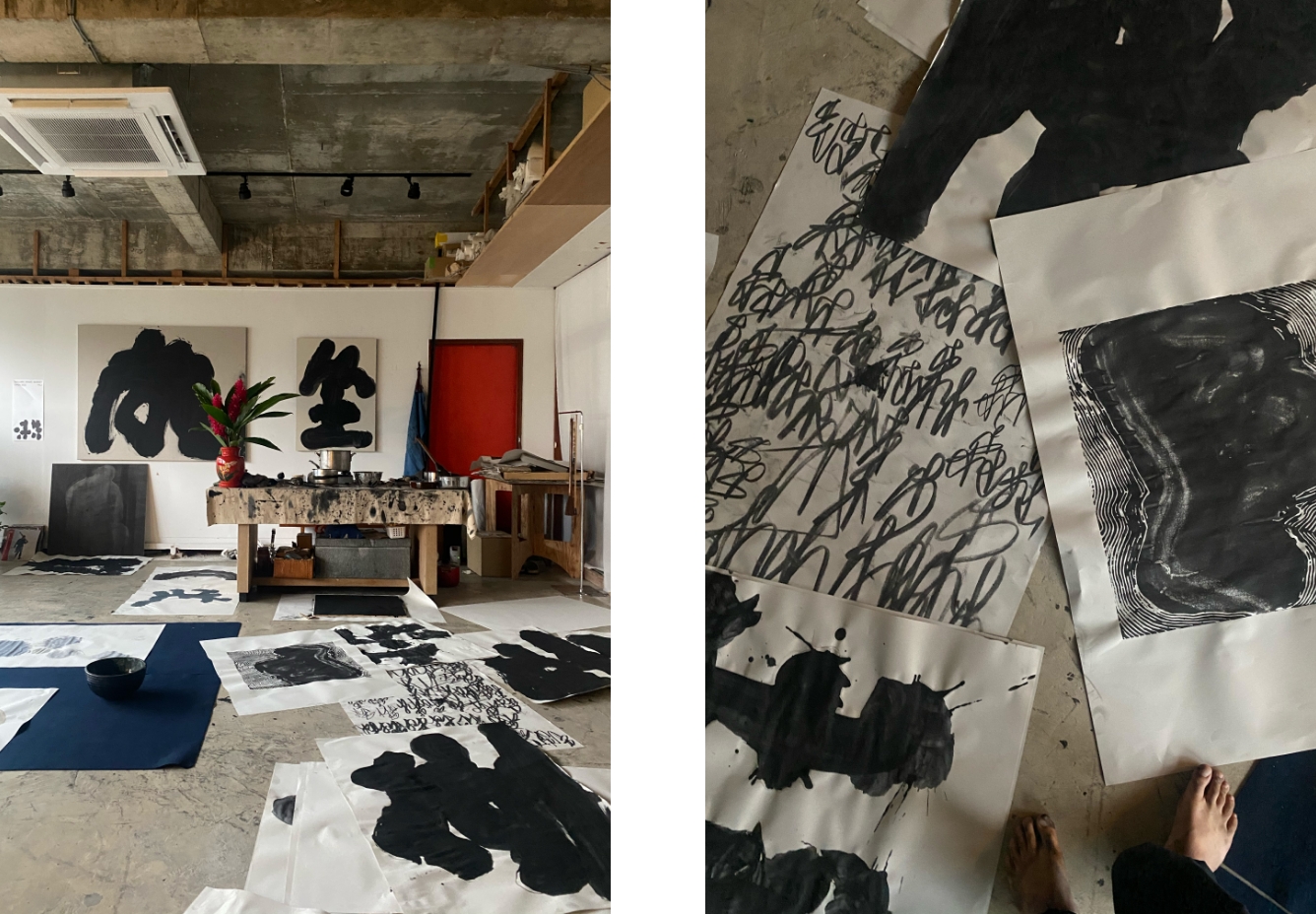
What sparked your interest in colour, specifically going from black to indigo?
Until very recently, I thought physically going to another country and immersing in a different culture and history is the easiest way to center myself spiritually but since that wasn’t possible due to the pandemic, I had to look inwards. I found myself responding strongly to indigo. I often go to museums to view these Miyakojima textiles and they appear black on first glance. But the more I look at it, the tones of dark blue become more apparent. There was a time that I wanted to be able to achieve a similar effect with black through repeated dyeing but there’s a variety of colours in indigo, not just one, so I fixated on it. It was the Miyako Jofu made by Mieko that sparked my interest, after all.
There’s a lot to be learned from Mieko’s work. What aspect do you find particularly impressive?
Mieko not only grows her own indigo, she makes and designs her own patterns. By having hand in all steps of the various processes, there are moments that compel you to pause even when you don’t mean to. Seeing how these colours and patterns turn out reflect the creator’s sensibility. I felt that indigo in particular is quite strongly reflects this concept, so I was hesitant at first to approach the medium also because I have a lot of respect for Mieko’s individual work.
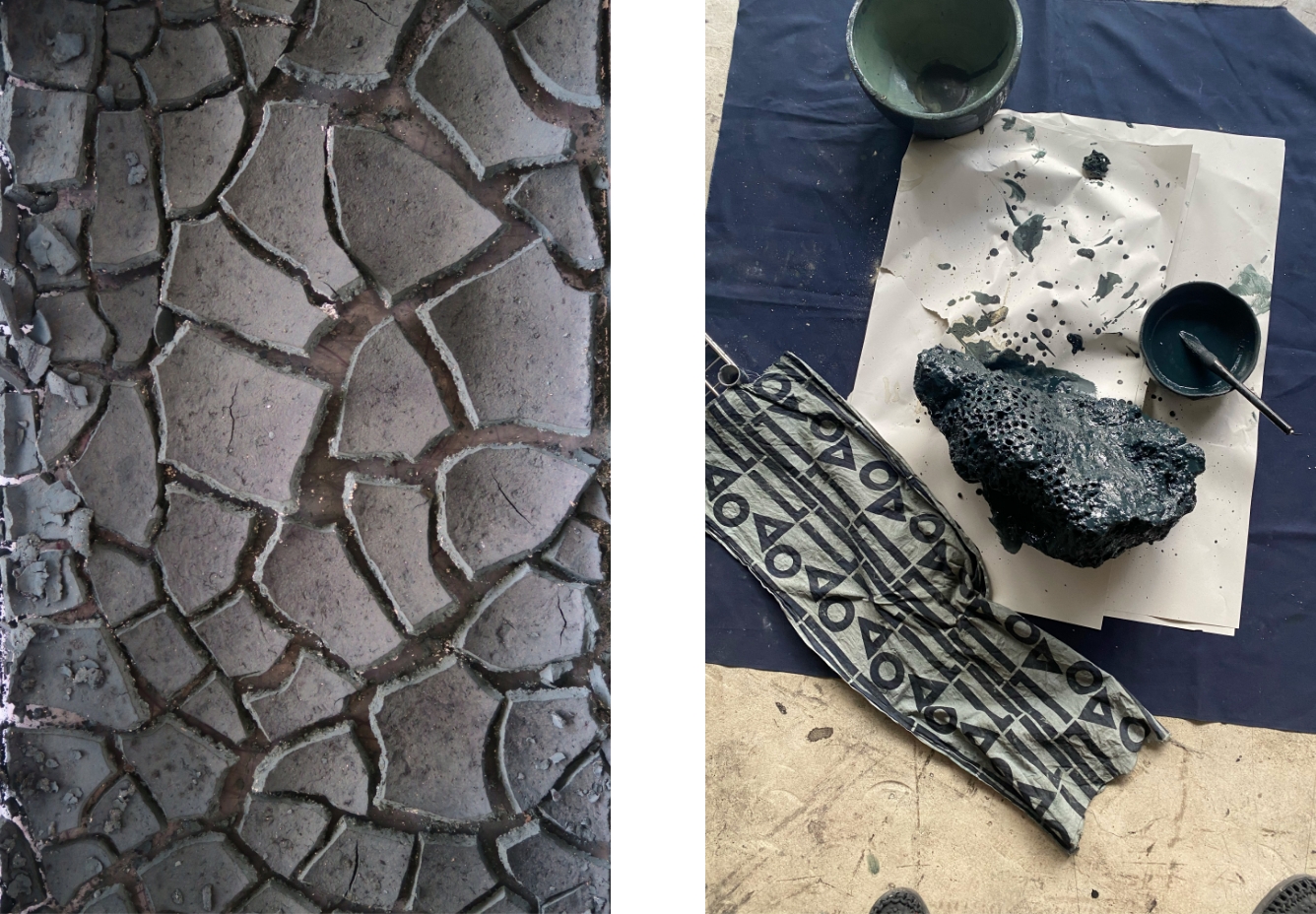
You draw with burning indigo. I felt the conviction with which you approached the material that was new to you.
Mieko taught me how to treat indigo like a living thing, and I learned that in order to exacerbate the fermentation of the indigo, brown sugar and awamori is added to help it along. I use heated ink for my own work, so using burning indigo was my way of adapting my personal art style with a new medium.
Does the colour deepen when it’s burned?
It’s something I become more and more aware of. Something like the thought of more superfluous flying away. Currently, I mix indigo with animal glue in accordance with how our ancestors did. Pigments like indigo and soot (raw source materials for ink) were mixed with glue which acts as an adhesive and sticks to paper and canvas. The thickness varies depending on the process so there’s no real “correct” way to use this medium this way except maybe leaving it alone too long as it will rot. If I wanted to use more forgiving pigments I’m sure I’d be able to find something suitable in art supply stores, but I’ve always been more attracted to more raw materials.
Is it because they’re more “alive”?
In a way? I think I feel more urgent to self-express when I’m in a more unstable situation. Now that I’m essentially creating my own medium, it takes more time but I feel more connected to the essential foundation of the work. I’m learning a lot by simply going through the process myself, asking myself questions while in the activity of creating and putting pieces together.
Can you say then, that the work of painting starting from making the paint itself is a way of self-discovery?
The motifs I draw are from characters, words, letters, but I’m not sure if I attach the work to the original meaning of these words or letters. Because as we grow up, we absorb and learn from what we see and what we hear from others to develop a better understanding of the world. But I do wonder if that’s the end of it; feeling that something is right because everyone says so or when I feel relieved that everyone shares the same opinion. I think I form a sense of self by asking “Do you really think so?” The world is constantly changing, and how much can we be skeptical of that change? Of course as the world becomes more developed, that in itself is a wonder, but a theme I continue to touch on is to search for more pure and innocent things in a fast-paced world wrought with information overload. I don’t know; it’s something I think about a lot, and it feels like something similar to enlightenment. The constant loop is in and of itself contradictory, but I can’t stop obsessing so I don’t want to give up on it.
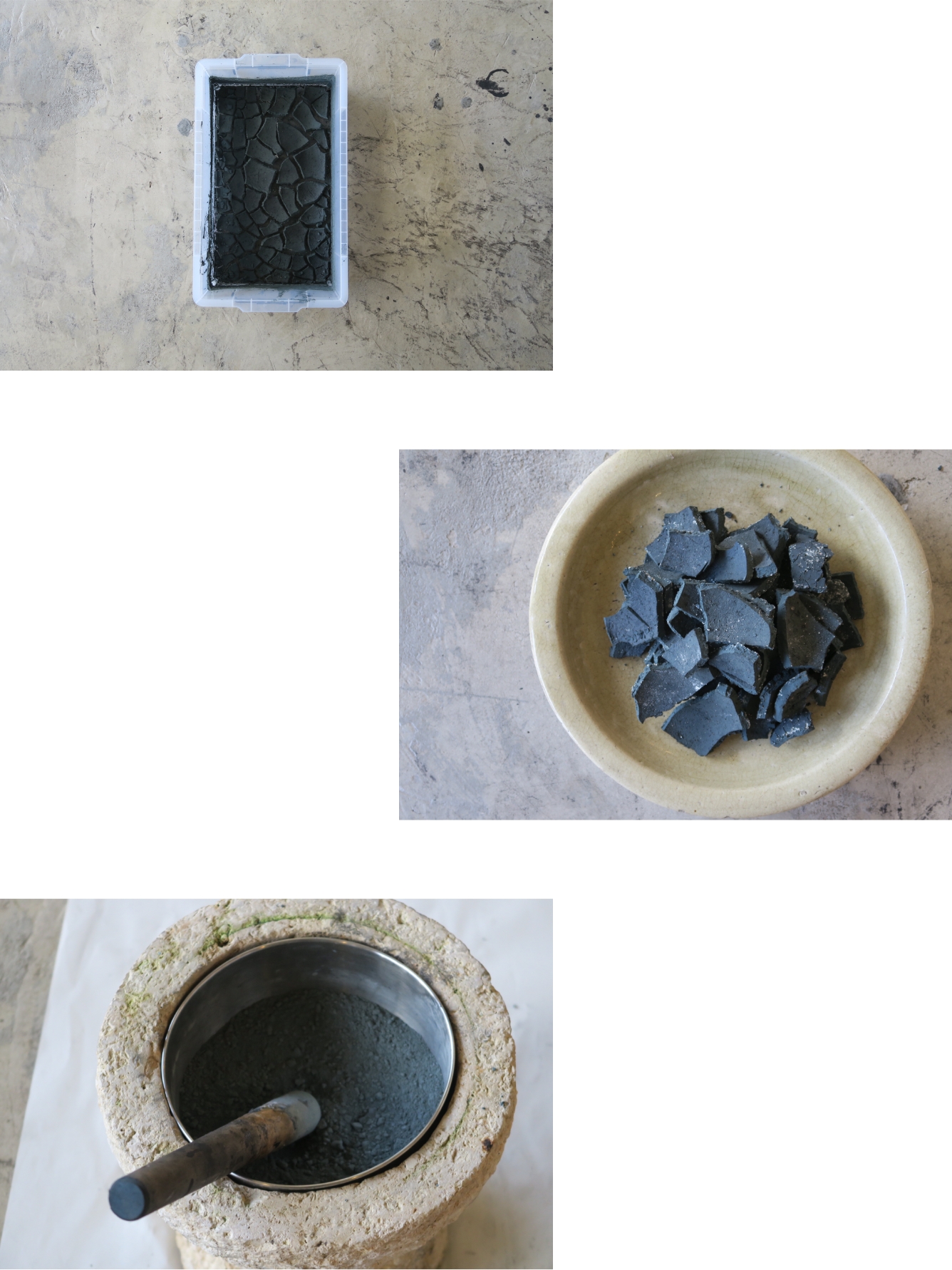
How do you relate to the environment you grew up in?
Miyakojima is an island that’s sensitive to change, and I felt that while I was working. At first, I didn’t know why I kept writing until I learned more about the environment I grew up in and its history. It was quite somber to learn as the island’s historical typhoons and droughts as well as political unrest has made life difficult here. I guess you could say that this island keeps changing because of all of these factors.
This island has been shaped and influenced by so many things that there’s a constant state of unrest, but there’s a spirit of acceptance that’s born from that. That’s maybe why I fixate on things that remain the same amidst constant flux. No matter how the country politically shift, the contours of this island in which we laid our roots, won’t change. I continue to draw to continue exploring that.
The act of drawing is spontaneous. Maybe the reason why I do it so much is to leave some kind of physical mark here. It may be more meaningful to use characters and symbols that everyone understands as motifs, but I invite the viewer to project their own perspectives and come away with something different. My personal background heavily influences my work, and also relates to my interest in indigo.
The desire to connect with the culture of the land, despite the gradual deterioration, can be felt in the artwork. In connection to that, do you feel some sense of responsibility in carrying on the weaving tradition in your own way?
In a way, but it’s different from making it my sole motivation. I believe that self-expression will lead to increased awareness, and it takes courage to approach traditional practices with a new perspective. Sometimes the destruction of a fixed and formalized structure is needed but if you take away too much, it ceases to exist so finding a balance between innovation and preservation is important. As an artist, I urgently feel the need to express the sense of crisis I feel about the society in which we live. The intensity of that expression can be filtered through the ideas reaped from our history, our predecessors. I think it’s important to find my own perspective and ground it in our present, and I believe knowing my history can help connect everything to my way of artistic expression.
You recently exhibited at PALI Gallery.
Yes, it’s very close to the atelier; about five minutes’ walk. I work as co-director with the photographer Naoki Ishikawa. I have no place in Miyakojima to fully exhibit the way I wish to, so I’ve always wanted to someday create a space, a landscape that reflects my artistic expressions in their entirety. People from all walks of life gathering in the gallery to talk about music, politics, history, and culture through art, by creating a salon-like space in the middle of the city. I think this can incite some small change in people, whether they live here, are just visiting, or just passing through.
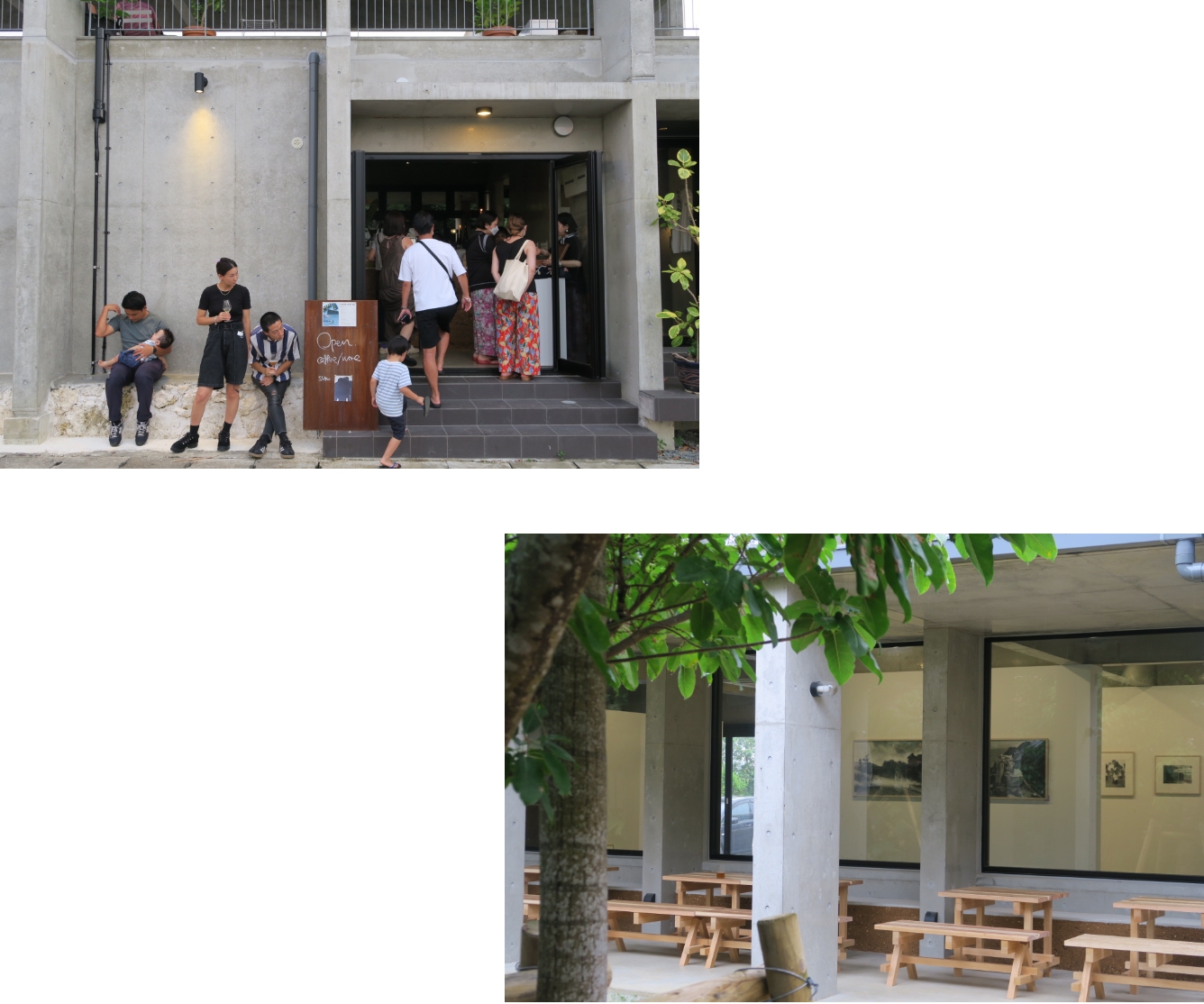
It looks like it will be a new cultural center in Miyakojima, judging by how it’s growing so quickly.
Yes, it’s a place to hopefully encourage free thinking. I think there’s a way to be more politically active, but I want to be more subtly disruptive. I believe that galleries have great potential as spaces for different people and their varying opinions to come together. The coffee/wine stand was purposeful too, to invite people who aren’t usually interested in art into the space. This kind of space is the first of its kind in Miyakojima, and I hope for it to be meaningful to the community as well as create new opportunities for artists like myself and Mr. Ishikawa.
To do so, we’re organizing an artist-in-residence program which is where we invite artists to stay in Miyakojima for a period of time to create work in a new environment, which will provide us with new perspectives. They process and express things you wouldn’t see otherwise if you lived here your whole life. So I hope that everyone, including islanders and myself, will have more opportunities to expose ourselves to these differing perspectives and worldviews.
It’s natural for people with different values to come together and talk, perhaps even argue. But that conflict is meaningful if that can add new dimensions to one’s way of thinking. So it would really be great if we open up more, and spend more time having important discussions and hopefully bring progress to a small island that tends to lean conservative.
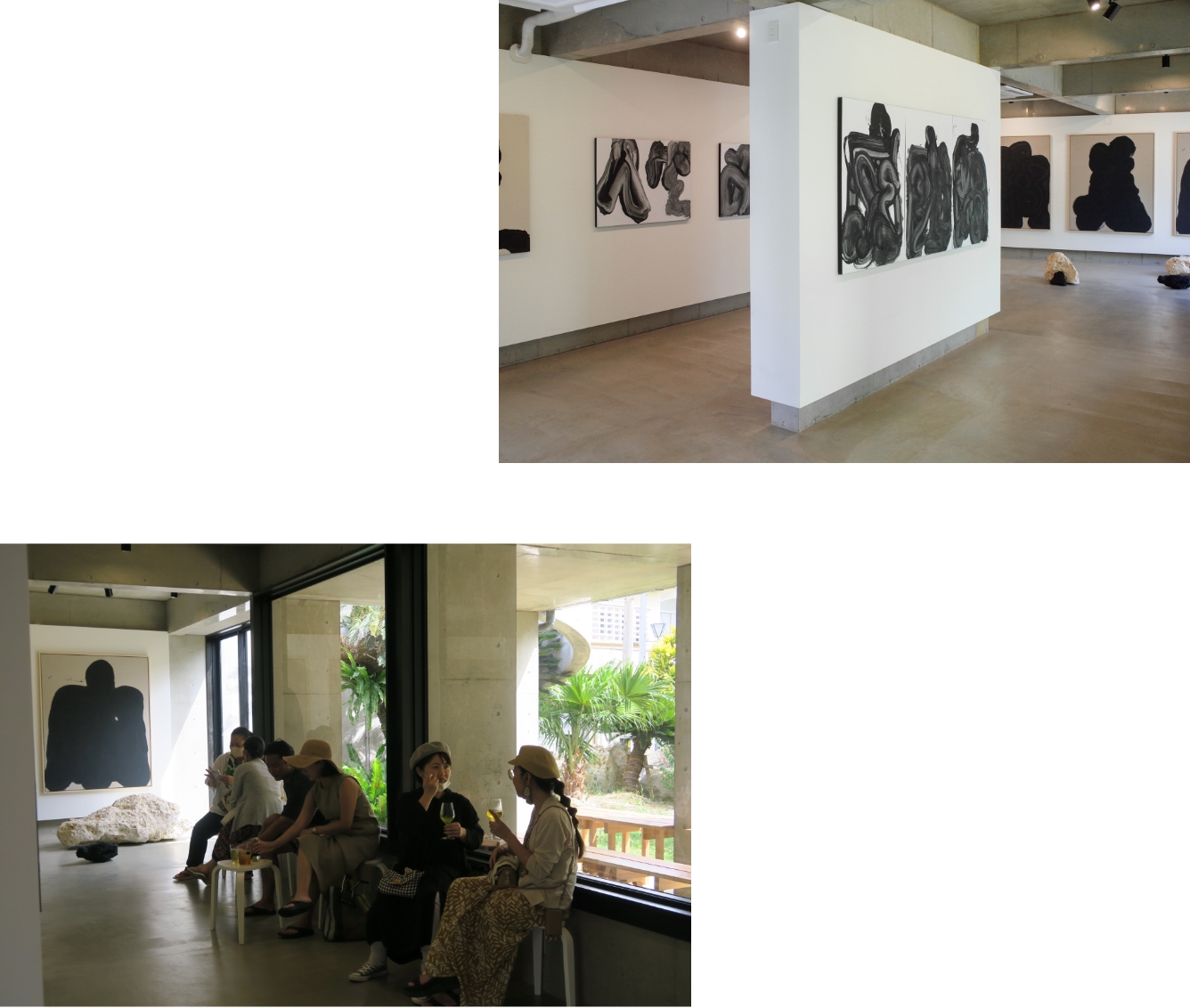
Photography: Daichiro Shinjo
Edit & Text: Yuka Sone Sato
Design: Mammy Horie
Translation: Kelly Yeunh





